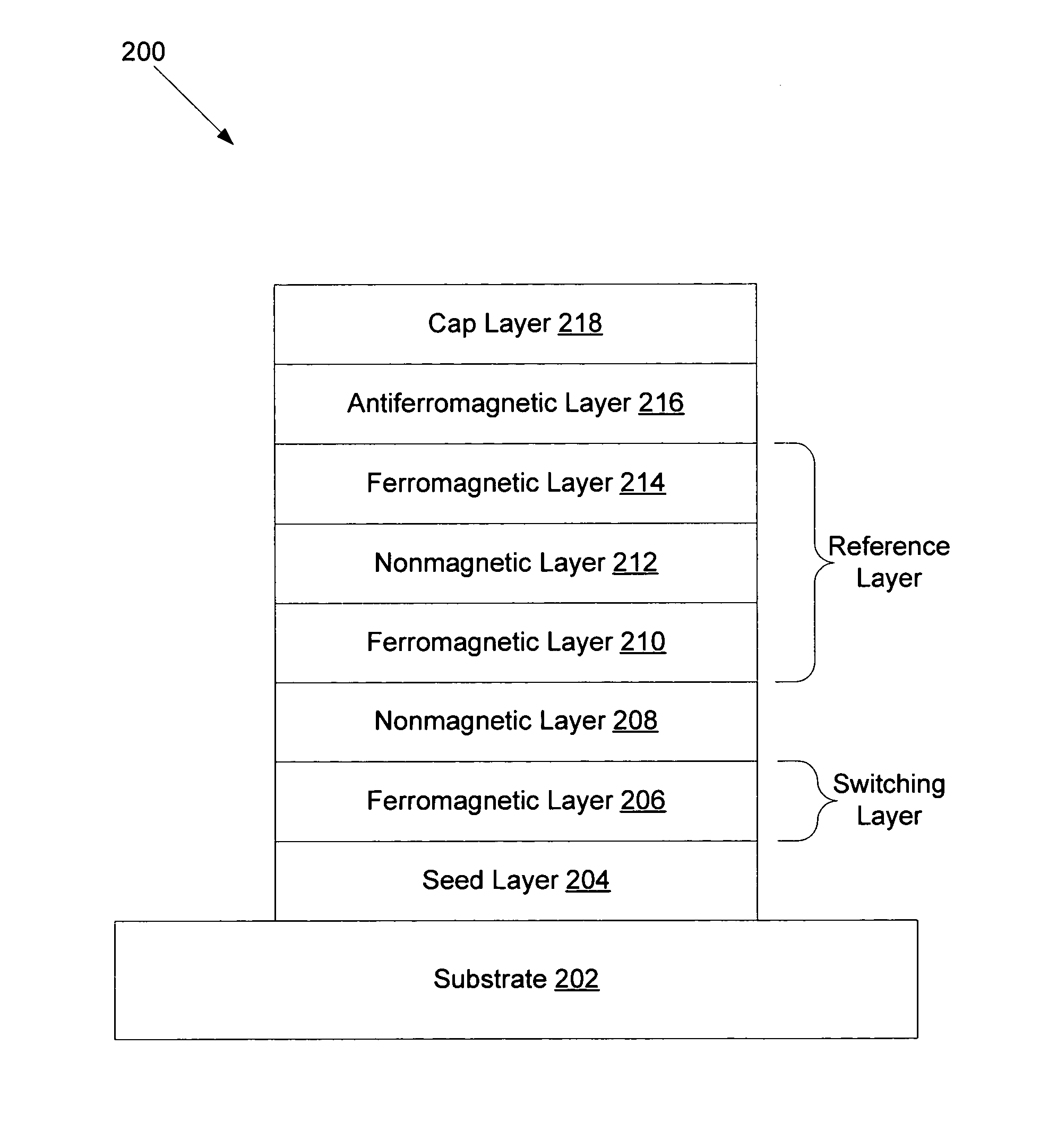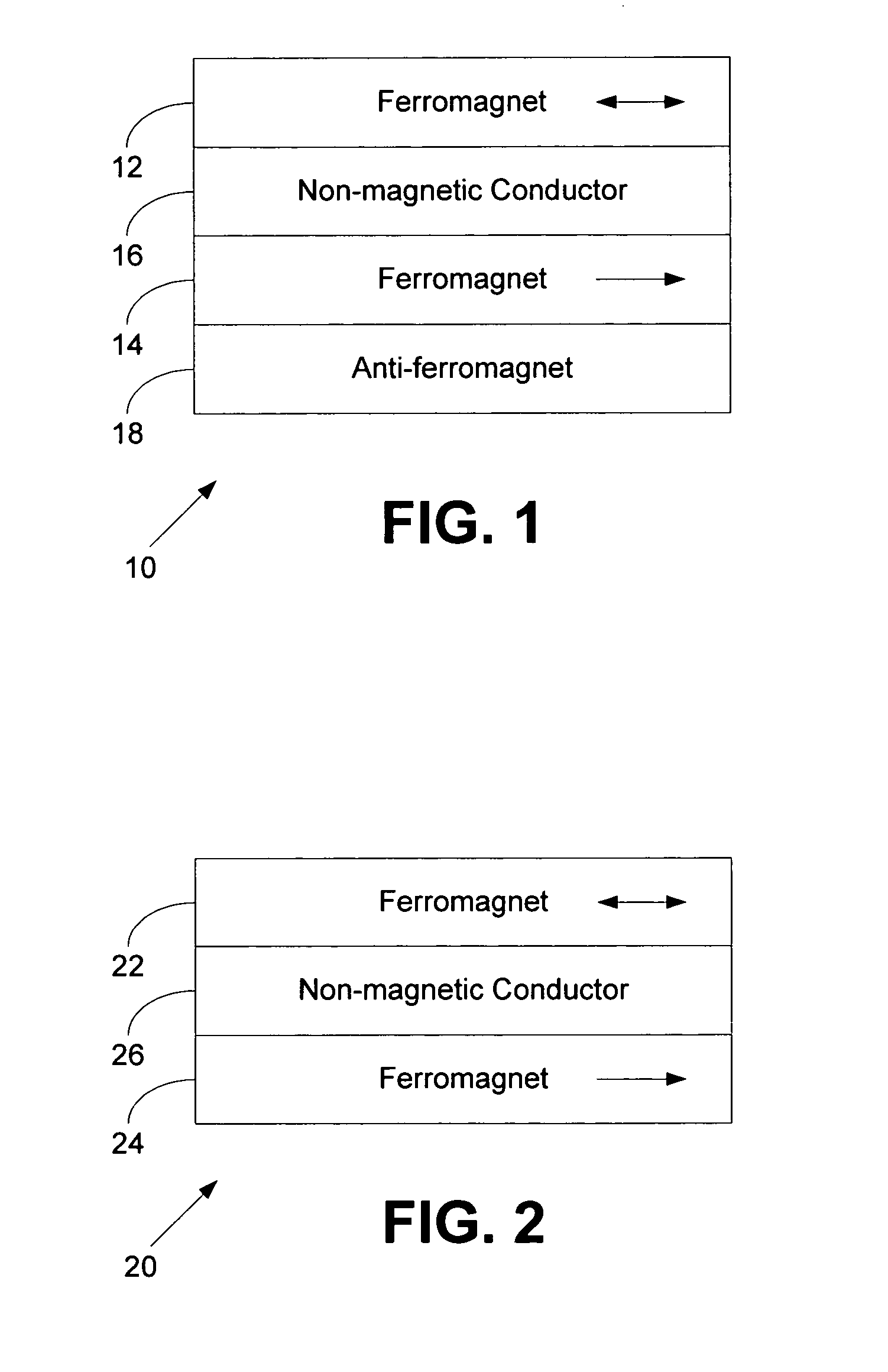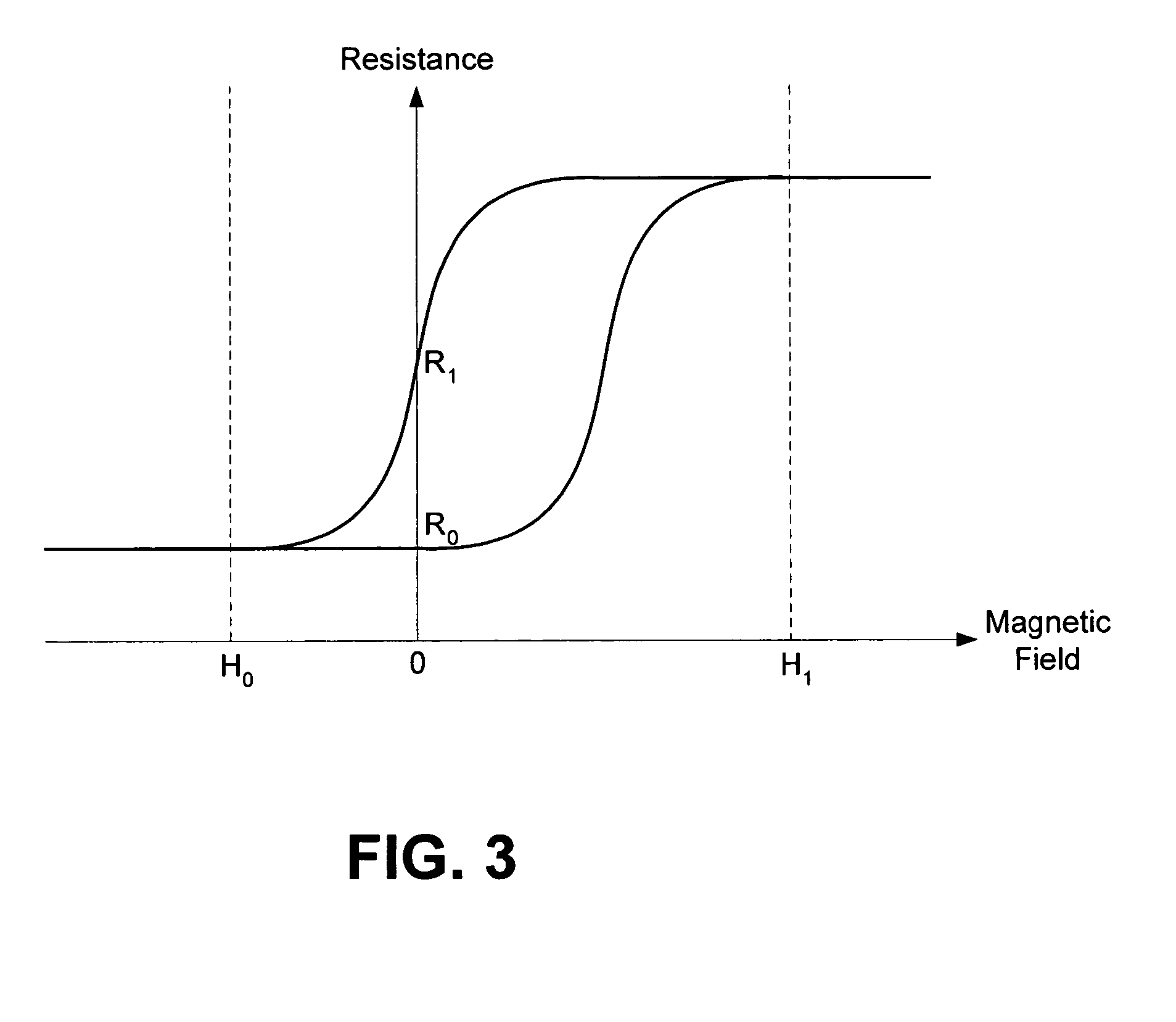Bias-adjusted giant magnetoresistive (GMR) devices for magnetic random access memory (MRAM) applications
a giant magnetoresistive and random access memory technology, applied in the field of magnetic random access memory applications, can solve the problems of asymmetric hysteresis curve, high word current requirements for reliable operation, and often biased hysteresis curve of gmr devices
- Summary
- Abstract
- Description
- Claims
- Application Information
AI Technical Summary
Benefits of technology
Problems solved by technology
Method used
Image
Examples
Embodiment Construction
[0023]The present invention, in its preferred embodiments, provides GMR devices, such as spin valves or pseudo spin valves, with hysteresis curves that are substantially symmetric about zero applied magnetic field. FIG. 4 shows an example of such a substantially symmetric hysteresis curve. As shown in FIG. 4, the difference between the highest resistance and lowest resistance is maximal at near zero applied magnetic field. The highest zero-field resistance, R1, may be achieved by applying and then removing magnetic field, H1, and the lowest zero-field resistance, R0, may be achieved by applying and then removing magnetic field H0. Ideally, H1 and H0 represent magnetic fields of the same magnitude but opposite direction, so that they can be generated by the same word current flowing in opposite directions. Although FIG. 4 illustrates a perfectly symmetric hysteresis curve, it is to be understood that GMR devices with hysteresis curves that are substantially, though not perfectly, sym...
PUM
| Property | Measurement | Unit |
|---|---|---|
| resistance | aaaaa | aaaaa |
| magnetization | aaaaa | aaaaa |
| magnetic field | aaaaa | aaaaa |
Abstract
Description
Claims
Application Information
 Login to View More
Login to View More - R&D Engineer
- R&D Manager
- IP Professional
- Industry Leading Data Capabilities
- Powerful AI technology
- Patent DNA Extraction
Browse by: Latest US Patents, China's latest patents, Technical Efficacy Thesaurus, Application Domain, Technology Topic, Popular Technical Reports.
© 2024 PatSnap. All rights reserved.Legal|Privacy policy|Modern Slavery Act Transparency Statement|Sitemap|About US| Contact US: help@patsnap.com










